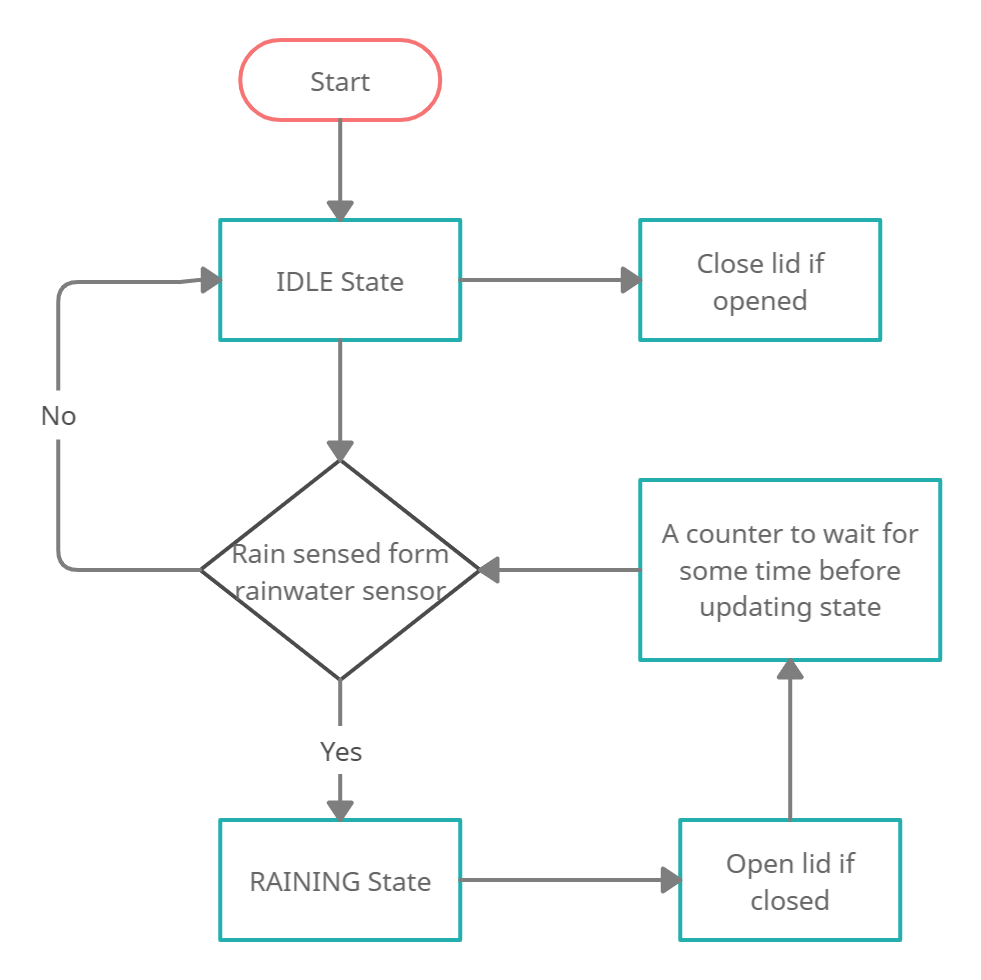A smart, low power implementation of a rainwater harvesting system which would sense if it's raining or not and open the water tank lid automatically to conserve water. The idea is to implement the system in normal households in a budget friendly low cost manner to maximize water conservation. The system will consist of digital logic circuits to monitor the rainwater sensing equipment by using a FSM based design approach at regular intervals. The aim would be to design a compact system that would be easy to install on any kind of water tanks.
Project Proposal
1. High-level project introduction and performance expectation
This projects focuses on a smart, compact and easy to install, low cost and efficient approach to rainwater harvesting methods.The proposed idea is to implement a digital circuit that will be connected to a rainwater sensor to detect if rain is falling or not. As soon as rain is detected the circuit will send a signal to the servo connected to water tank lid to open the lid. Once the lid is opened the circuit will update its state at suitable regular intervals. As soon as it detects that rain has stopped falling it will close the lid.
The digital circuit will follow an FSM based design approach consisting of different states for proper functioning of the system. Initially the circuit will be in an IDLE state indicating that rain is not falling. As soon as the rainwater sensor detects rainfall it will alter the state of the FSM to RAINING state which will send a signal to the tank lid servo to open the water tank lid.
The aim will to design a compact, low cost and low power circuit that could be installed at normal household tanks to maximize the conservation of water as much possible.
Along with water harvesting a water health monitoring system and water level indicator can also be implemeted along with the above mentioned work.
2. Block Diagram

3. Expected sustainability results, projected resource savings
The project is aimed to provide flexibility to be implemented at most of the designs on water tanks. The critical part would be to design an compact system that would require minimal space and implemented on low power consumption technology stack. The logic design needs to be smart and simple so as to increase the design's efficiency.
0 Comments
Please login to post a comment.